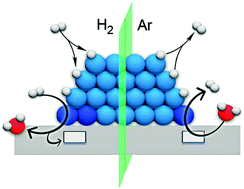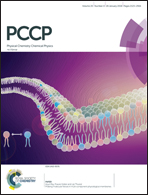On the origin of high-temperature phenomena in Pt/Al2O3†
Abstract
Treatments of Pt/γ-Al2O3 with H2 under harsh conditions have long been known to strongly influence the properties of this important catalytic system, but the true causes of the high-temperature effects still remain unclear. We have performed a more detailed study of this issue, having used H2-TPD as a sensitive probe of metal–support interactions. The experimental results are in accordance with previous studies and demonstrate strong changes in adsorption and catalytic properties of Pt/γ-Al2O3 after high-temperature H2 treatments, as well as the possibility to reverse the changes, completely or in part, through O2 and H2O treatments. Thorough examination has shown that such behaviour is an intrinsic property of Pt/γ-Al2O3 and cannot be attributed to impurities or experimental artifacts. Moreover, there is no abrupt transition to a high-temperature state, but the system undergoes smooth and gradual changes upon increasing the H2-treatment temperature (TTR), with the changes being already apparent at a TTR of ∼ 300 °C. The results suggest that hydrogen can generate oxygen vacancies on the surface of the support in close vicinity to the Pt particles, and the system appears under equilibrium to be kinetically driven by temperature and thermodynamically driven by the PH2/PH2O ratio or local concentration of surface hydroxyls near Pt particles. The generated vacancies change the properties of contacting particles, and the changes are most pronounced for sub-nanometric Pt clusters and single atoms. Implications of the phenomena for the synthesis, study, and use of Pt/γ-Al2O3 and its related nanosystems are discussed.

- This article is part of the themed collection: 2018 PCCP HOT Articles


 Please wait while we load your content...
Please wait while we load your content...